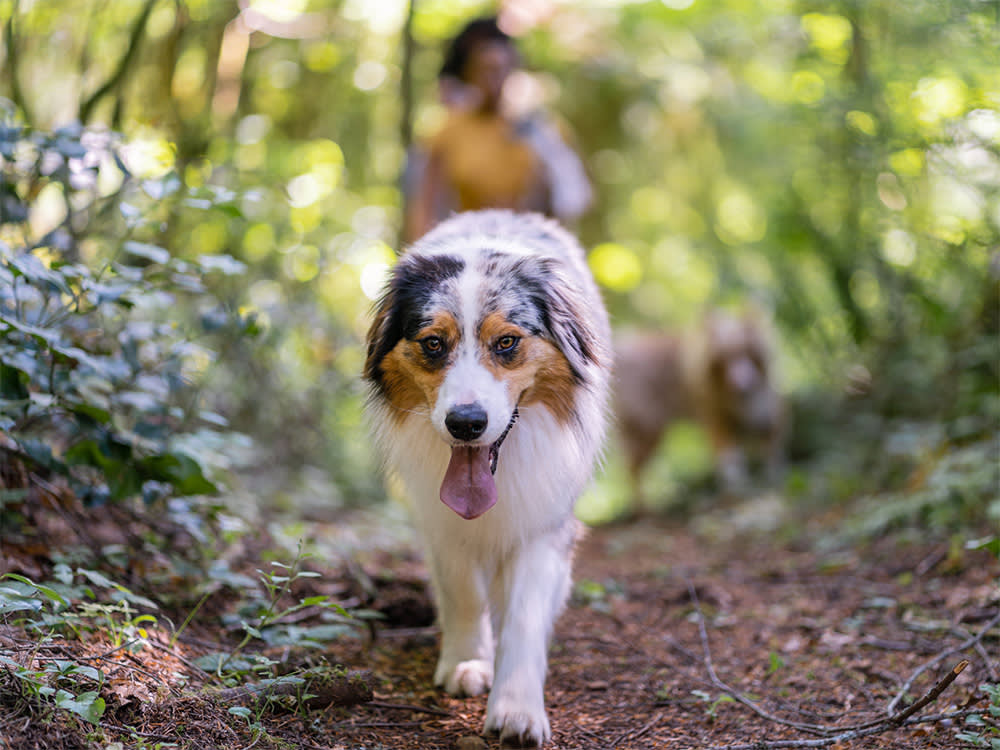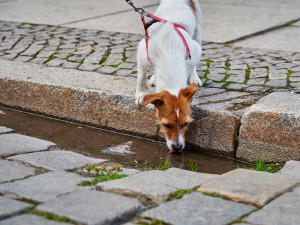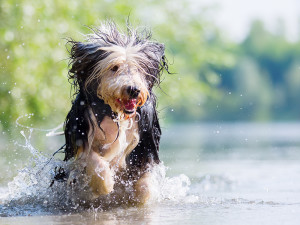How to Keep Your Pets Safe During Extreme Heat Waves
As scorching summer temperatures become the new normal, here’s how to help keep your pets cool and healthy.

share article
It’s already been a brutal summer. In June, cities all over the United States opens in a new tabbroke heat records for this time of year, with temperatures easily spiking over 100 degrees Fahrenheit. And it wasn‘t just in the U.S.: During the week of June 18, heat waves across five continents set 1,400 global records, sparking experts to remind people that this is a direct result of climate change.
“It should be obvious that dangerous climate change is already upon us,” Michael Wehner, a climate scientist at Lawrence Berkeley National Laboratory, told opens in a new tab. “People will die because of global warming on this very day.”
As such extreme temperatures become the norm, we need to think about everyone in the family. Such high temperatures are dangerous not just for humans, but also for our petsopens in a new tab.
“Just like people, cats and dogs can be at risk of heat exhaustion as well as heat strokesopens in a new tab on hot days,” explains Dr. Amy Fox, a small animal veterinarian in New York City. Dr. Fox adds that symptoms of these conditions can include “everything from feeling uncomfortable to becoming disoriented, vomitingopens in a new tab, and having more serious effects including seizuresopens in a new tab, multi-organ damage, and even death.”
Extreme heat can be especially dangerous for pets, Dr. Fox points out, because unlike humans, they can’t verbalize when they’re feeling overheated, and because they may not be able to cool themselves down right away if humans don’t provide them with a cool, covered space and water.
Below, some ways to keep your pets safe in this heat.
Limit their outdoor time.
The best and most effective way to keep your pets safe when it’s boiling out is to keep them inside. As Dr. Fox puts it, “this means indoors with a fan or air conditioner on as much as possible.” This goes for both cats and dogs, Dr. Fox says, especially those with underlying medical issues that put them at a higher risk of overheating, like being overweightopens in a new tab, elderly or very young, brachycephalicopens in a new tab (having a smushed face) or having respiratory problems.
If you care for outdoor cats, Fox says to make sure that they have access to cool spaces with plenty of fresh water.
When you do take your pet outside, make sure they’re protected.
For most dog owners, keeping your pup inside all day isn’t an option because they need to relieve themselves and to get some exercise. If going outside can’t be avoided, keep it brief, stay in the shade, have water on handopens in a new tab, and don’t take them out at the hottest times of the day.
“Even a short walk can cause heat stroke on a summer day,” says Dr. Rachel Warnes of the Oregon Humane Society. If you have a dog who has a lot of energy to burn, Dr. Warnes recommends “short, frequent walks and also walking early in the morning or in the evening.” If you’re in a city and your dog has to walk across hot, rough surfaces like pavement or sand that can damage your pup’s paw pads, Dr. Fox suggests protecting their feet with booties and/or paw balmsopens in a new tab (though it’s important to note that paw balms require multiple applications before they start to take effect.)
Sunscreen can also be opens in a new tabuseful, especially for dogs with short coats, but it’s important to check that the sunscreen doesn’t contain zinc oxide (desitin) or salicylates (aspirinopens in a new tab), both of which can be toxic to dogs if they’re licked off and ingested in large amounts.
To take their cooling up a notch, you can stock up on gearopens in a new tab like cooling vests or bandanas, which cool your dog by evaporation (just like how human sweating works), and cooling mats and freezable toys to help bring their temperature down when they get back home.
Keep an eye out for signs of overheating.
Although ideally your pet won’t get overheated in the first place, it’s important that pet parents be able to recognize the signs of overheating in animals, because the sooner overheating is recognized, the sooner it can be treated.
“Any dog that is panting heavily, restless, laying down and/or reluctant to continue on a walk should be moved to a cool space immediately and offered cool water,” Dr. Fox says. More severe symptoms to watch out for include disorientation, vomiting, unresponsiveness, having a fever greater than 104 degrees, and seizures. If these happen, take your dog to the vet immediately.
Fox adds that no pets should be left alone in a car during periods of extreme heat. “Even on days that don’t feel as hot to us, a car can heat up very quickly and sadly this can be deadly for dogs and cats.”
Know how to cool them down.
If your dog does show early signs of overheating, the best thing to do is to get them out of the heat and into a cool space with cool water. If they continue to pant, you can speed up the cooling process by wetting them down with cool water and aiming a fan at them.
References:
Billions of People Just Felt the Deadly Intensity of Climate-Fueled Heat Wavesopens in a new tab

Madeleine Aggeler
Madeleine Aggeler is a freelance journalist and copywriter in Washington, D.C. Previously, she was a writer at New York magazine’s The Cut. She lives with her dog, Cleo, who works primarily as a foot warmer.
Related articles
![A woman sitting in a chair holding a dogs paw in her hand and holding the dogs face in the other hand.]() opens in a new tab
opens in a new tab6 Natural Paw Balms That Will Keep Your Pup Safe From Summer Heat
The best paw balms, based on veterinarian recommendations.
![Shepherd dog playing with yellow ball at the beach]() opens in a new tab
opens in a new tabHow to Keep Your Dog Safe at the Beach This Summer
5 tips to help your pup have fun in the sun — safely.
![Forrest fire.]() opens in a new tab
opens in a new tabWildfires Are More Common Now. Here’s How You Can Protect Your Pets
Wildfire season is here. Take these steps to protect your pets.
![Dog drinking water from a puddle in the road]() opens in a new tab
opens in a new tabGiardia in Dogs: Signs, Symptoms and Treatment of This Parasite
If your dog drinks from puddles or splashes around in lakes, read this.
![puppy scratching fleas, get rid of fleas on dogs]() opens in a new tab
opens in a new tabHome Remedies For Getting Rid of Fleas on Dogs—Naturally
You can stop your home from becoming a literal flea circus.
![Bearded Collie running in a lake]() opens in a new tab
opens in a new tabWhen Drinking Too Much Water Is Deadly
How to keep your swim fan safe.








